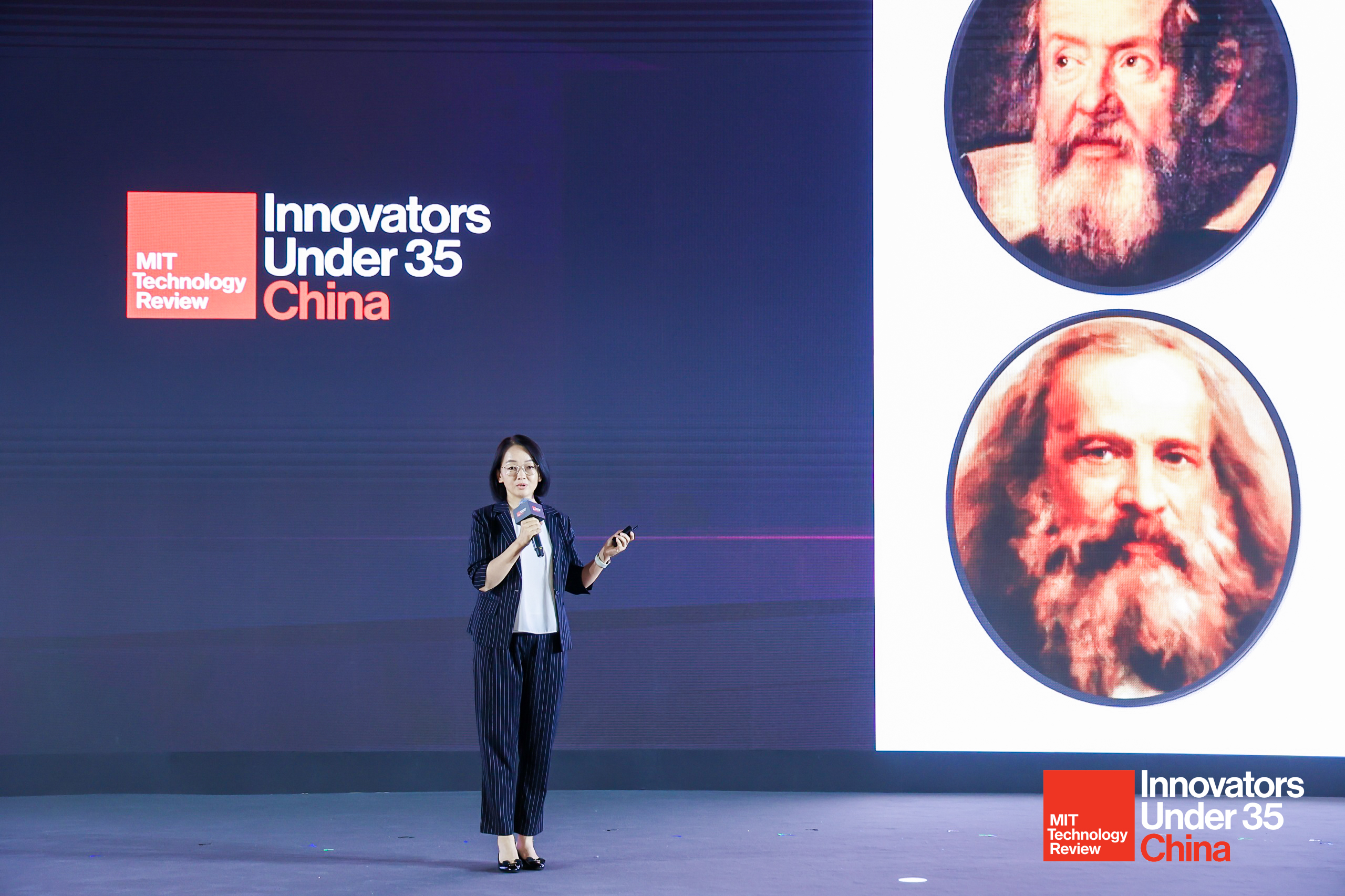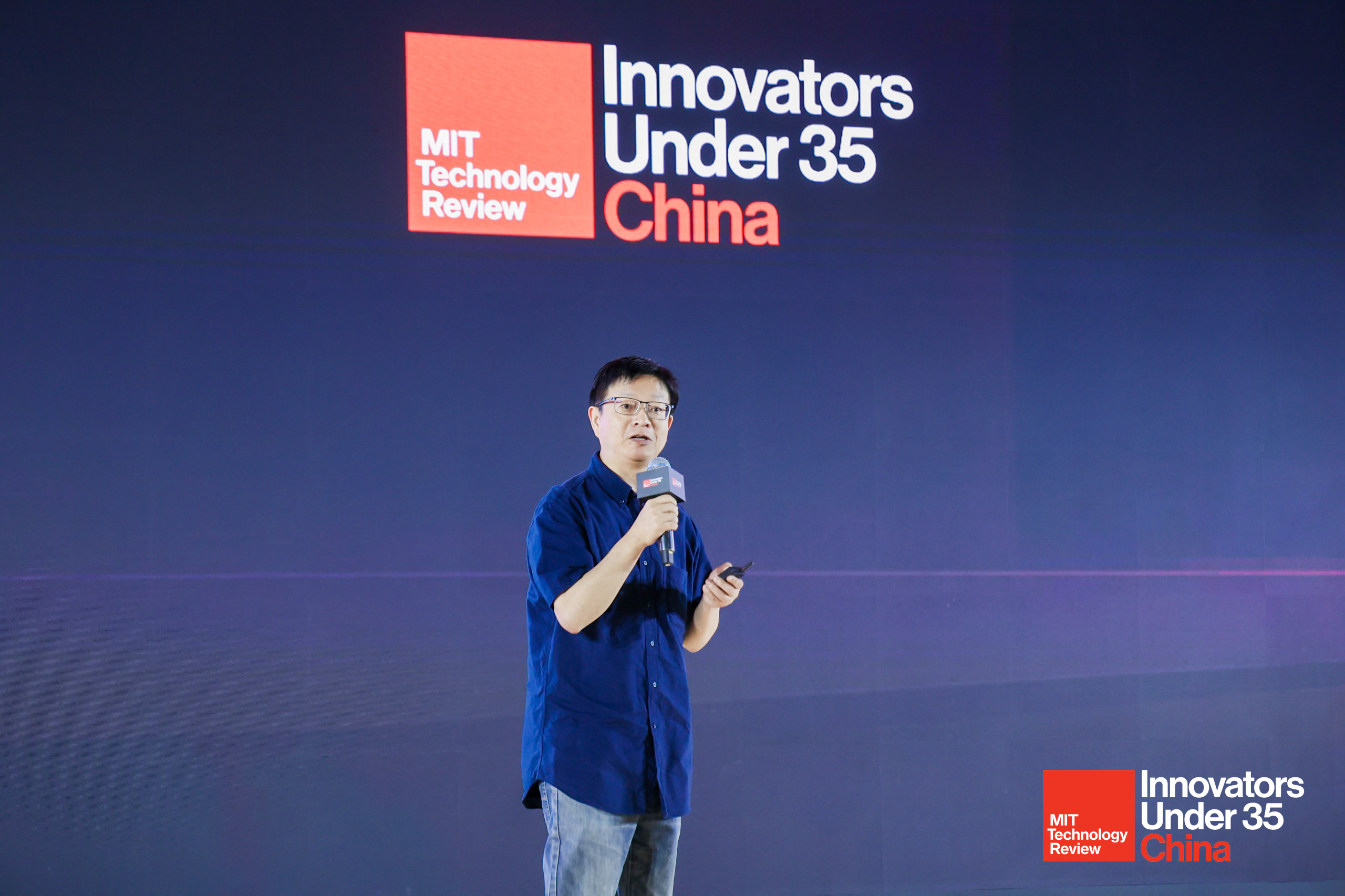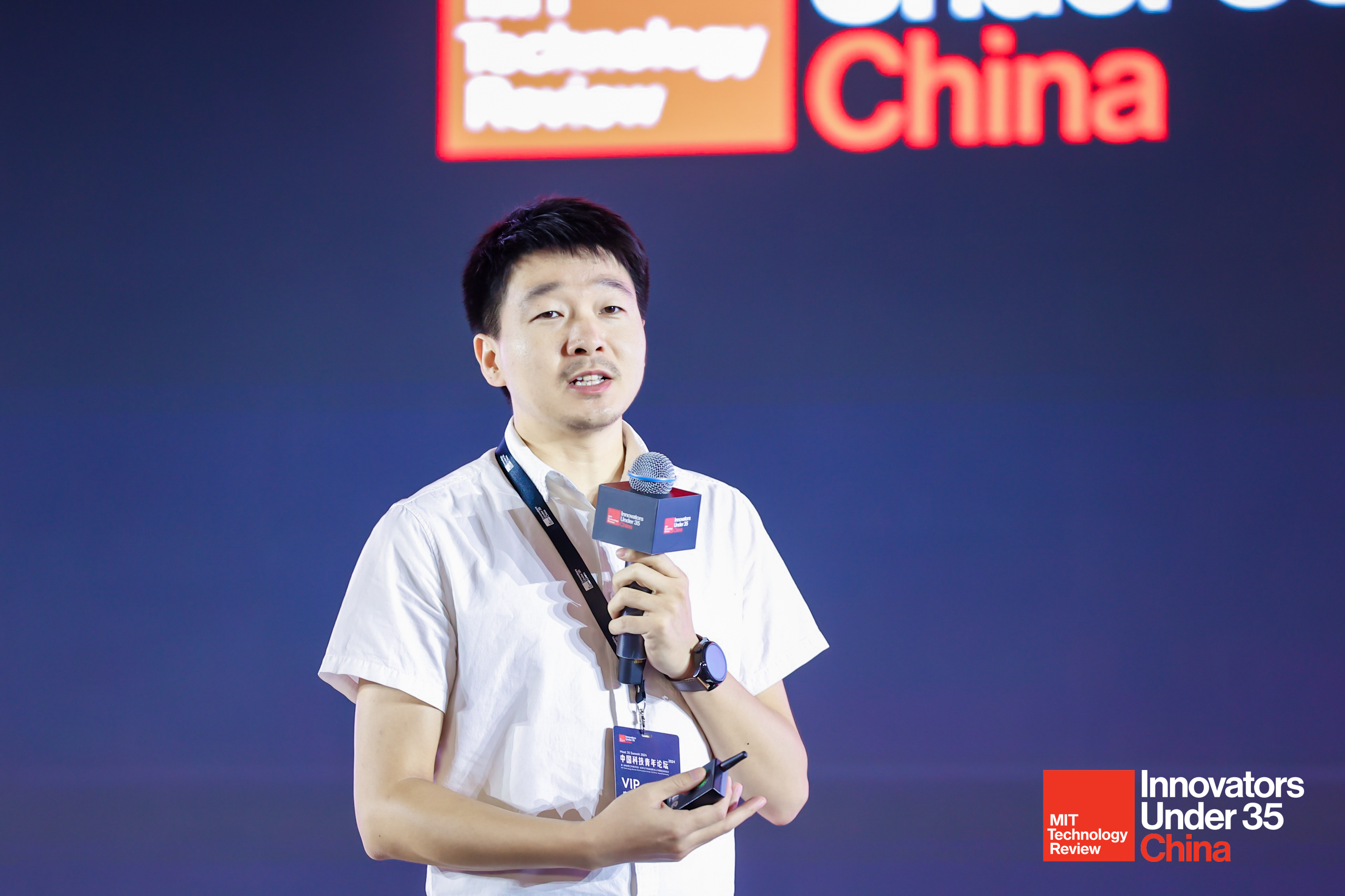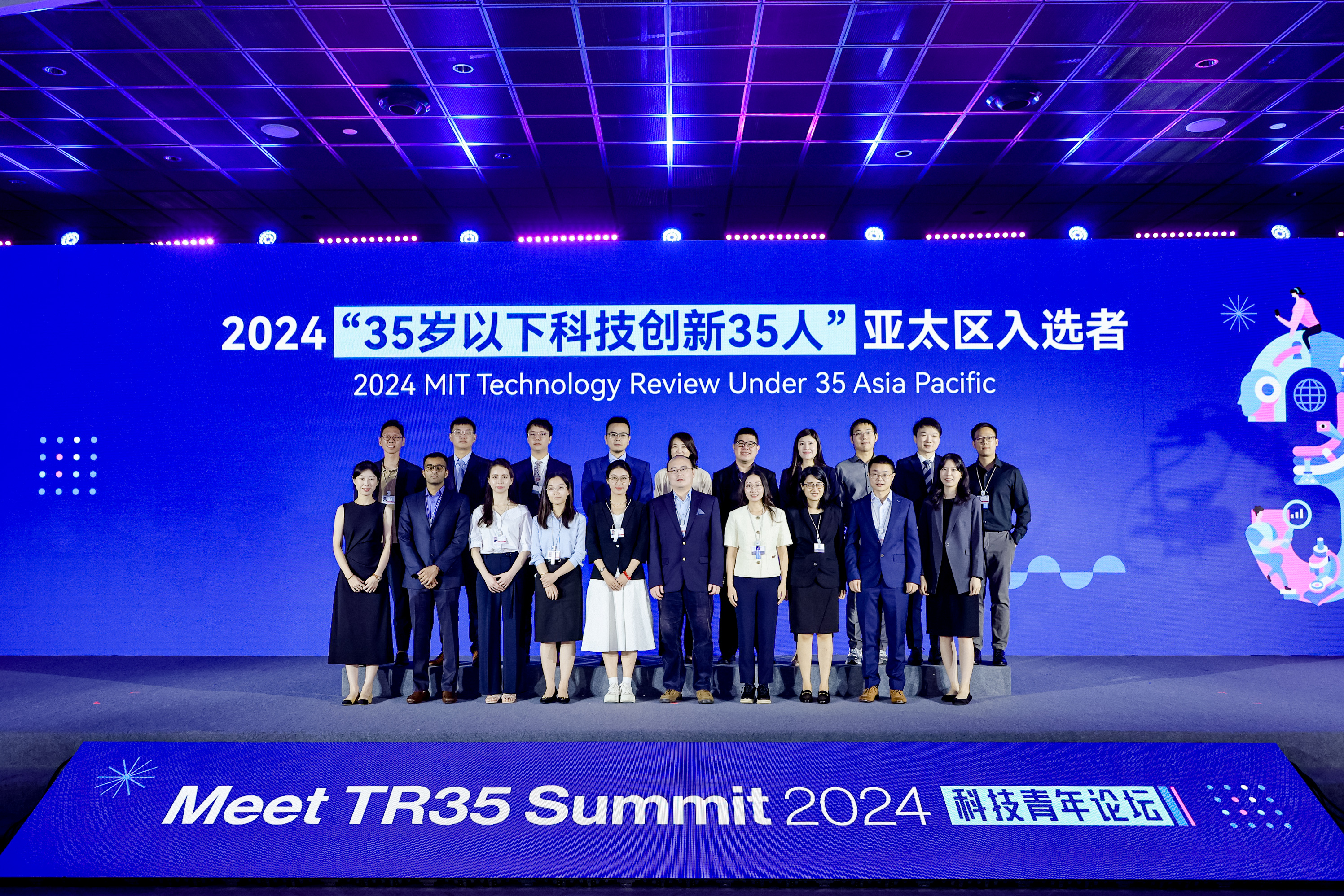
"The boundary of a person's language is the boundary of his world." On July 12, Qiu Xipeng, a professor at the School of Computer Science at Fudan University and the leader of the MOSS large model, quoted this sentence from the philosopher Wittgenstein in his speech.
Following the announcement of the list of China candidates for MIT Technology Review Innovators Under 35 (TR35), the 2024 China Science and Technology Youth Forum was held in Minhang, Shanghai on the 12th. It was held at the Science and Technology Building, No. 0 Bay, Da Zero, District.
How to decode the mysteries of life in the era of big data
"As practitioners of life medicine, what opportunities and challenges will we face in the era of big data?" Tian Mei, Distinguished Professor of Fudan University and Executive Director of Fudan University Human Phenome Research Institute, said in her speech.
The complex correlation between the microscopic and overall human phenotypes and the examination of their mechanisms have been listed as one of the top ten cutting-edge scientific issues recently released by the China Association for Science and Technology.
Phenotypes are human characteristics that result from the interaction between genes and the environment.
The Human Phenotypic Research Institute of Fudan University has built the first cross-scale and multi-dimensional phenotypic research platform, focusing on and measuring more than 24,000 deep phenotypes of the human body to form a cohort.

Tian Mei, Distinguished Professor of Fudan University and Executive Director of Fudan University Human Phenome Research Institute.
Tian Mei said that with the help of advanced imaging technology, molecular imaging can "visualize" some biochemical reaction processes and changes in the human body. Imaging is no longer a simple auxiliary diagnosis, but will become one of the gold standards for medical diagnosis in the future, "creating" transparent pathology.

Yang Yi, professor at East China University of Science and Technology and deputy director of the State Key Laboratory of Bioreactor Engineering.
Yang Yi, professor at East China University of Science and Technology and deputy director of the State Key Laboratory of Bioreactor Engineering, introduced his team’s cutting-edge technology for precise monitoring of cell metabolism and related industrial applications. Cutting-edge technologies and tool innovations in cell metabolism are currently being used for translational research in industries such as medical diagnosis, drug discovery and biosynthesis, providing a biomedical technology innovation support platform for biomedical companies in Shanghai, the Yangtze River Delta and even the country.
Yang Yi led the team to develop a series of cell metabolism probes that can locate different subcellular structures, thereby enabling real-time high-resolution and ultra-fast analysis of cell metabolism through imaging methods. Relevant technologies are currently used in fields such as efficient biomanufacturing of biological products, such as the efficient screening of microbial natural product drug anabolism high-yield strains, which has greatly shortened the screening time from years to weeks. In addition, metabolism-based real-time detection technology is used in precise anti-aging research.
Wang Yajie, a distinguished researcher and doctoral supervisor at West Lake University, shared that AI-BT-Chem helps the development of biocatalysts.

Wang Yajie, a distinguished researcher and doctoral supervisor at West Lake University.
"New Productivity" Batteries
Aqueous batteries refer to secondary batteries (storage batteries) that use water as the electrolyte.
"New aqueous batteries can represent the development direction of new productivity." Chao Dongliang, executive director of the Aqueous Battery Research Center of Fudan University, said in his speech.
The development of new water-based batteries meets the major national strategic needs of "carbon peaking and carbon neutrality". Water-based batteries are low-cost, safe and environmentally friendly, and can be burned, punctured, and cut. In the context of battery high-density energy development encountering bottlenecks and battery safety requirements becoming increasingly high, Chao Dongliang developed a new multi-electron reaction pair to replace traditional single-electron reactions and empower battery development.

Chao Dongliang, executive director of the Water Battery Research Center of Fudan University.
Chao Dongliang said that my country's water-based batteries have a market scale of hundreds of billions, accounting for more than 30% of the entire battery market, but the energy is very low, less than 60Wh/kg. The technologies developed by the Water Battery Research Center of Fudan University all have energy densities above 100Wh/kg. Their applications range from low-speed electric vehicles to base stations and electric boats with extremely high safety requirements, complementing the advantages of lithium batteries.
Infinite Intelligence: Exploring the Future of Artificial Intelligence
At the "Infinite Intelligence" theme event on the afternoon of the 12th, Qiu Xipeng, a professor at the School of Computer Science at Fudan University and the leader of the MOSS large model project, shared the progress of the evolution from large language models to world models, as well as his prospects for the future development of large language models. Qiu Xipeng believes that "the boundary of a person's language is the boundary of his world." Language is the compression of the world by human intelligence. Based on this, he explained the principle of large language models: summarize rules and knowledge through language, then build a model to learn knowledge, then use the model to design the language, and use language to interact with the world.

Qiu Xipeng, professor at the School of Computer Science at Fudan University and leader of the MOSS large model project.
"Building a world model is to continuously predict the future state by modeling the living environment, and then continuously adjust its own characteristics to adapt to the environment." Qiu Xipeng said that it will start from efficient architecture, data governance, human alignment, tool enhancement, and cross-modal integration. , six aspects of intelligent agents, further develop the second-generation world model, continuously create efficient, safe, and credible basic models, while exploring practical, diverse, and complex application scenarios.
Shen Yichen, founder and CEO of Xizhi Technology, said that geopolitics is an important factor affecting the development of artificial intelligence. “Technologies based on UV lithography machines and more advanced process technologies after 7 nanometers are becoming increasingly difficult to master,” he said.
Across infinity: The key to building the future is cross-disciplinary integration
You Lixing, a researcher at the Shanghai Institute of Microsystems and Information Technology, Chinese Academy of Sciences, believes that in the era of knowledge explosion, we need to keep learning, especially cross-learning to a large extent. However, "cross-learning can bring about disruptive technologies, but it may not necessarily bring about subversion of the market." Therefore, while learning, we must also work down-to-earth and maintain a keen observation of the real market.
Sui Yanan, an associate professor at the School of Aeronautics and Astronautics at Tsinghua University, said that he believes that the most difficult thing about interdisciplinary interdisciplinary research is the difference in language: the same language has different meanings in different fields, which brings many problems to communication between different disciplines.
Ji Li, a professor at the School of Microelectronics at Fudan University, likens the intersection between disciplines and between disciplines and industries to the intersection of X. When an intersection point is found, it means that a consensus has been reached at that point and cross-fusion can be promoted. But after passing the intersection point, you will face different evaluation systems or demands. Therefore, it is necessary to switch to different ways of thinking in a timely manner and cultivate the industry’s “wall-breaking” spirit.

Jiang Xuefeng, a professor at East China Normal University, said in his concluding speech that intersections should not be made for the sake of intersections. Everyone is like a tree, the most important thing is to take root well. The deeper the roots go down, the more leafy the tree crown becomes, naturally pulling the surrounding trees together to form a forest. When the roots haven't penetrated deeply, all crossovers are just a flash in the pan.

